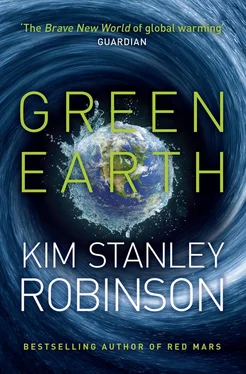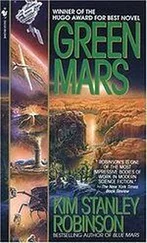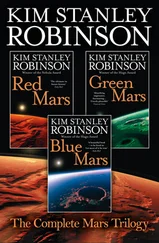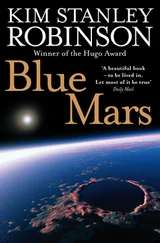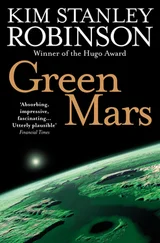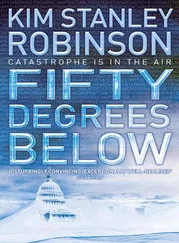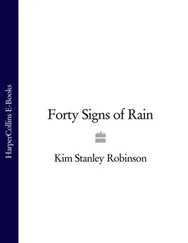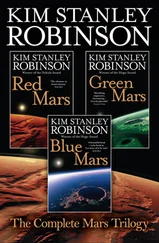Anna nodded. Editing a journal was an honor, though unpaid—indeed one often had to subscribe to a journal just to get copies of what one had edited. It was another of science’s many noncompensated activities, part of its extensive economy of social credit.
“Okay,” Anna said. “I just wanted to see if we could tempt you. That’s how we do it, you know. When visitors come through who are particularly good, we try to hold on to them.”
“Yes, of course.” Frank nodded uncomfortably. Touched despite himself; he valued her opinion. He rolled his chair toward his screen as if to get to work, and she turned and left.
He clicked to the jacket Anna had forwarded. Immediately he recognized one of the investigators’ names.
“Hey Anna?” he called out.
“Yes?”
“I know one of the guys on this jacket. The P.I. is a guy from Caltech, but the real work is by one of his students.”
“Yes?” This was a typical situation, a younger scientist using the prestige of his or her advisor to advance a project.
“Well, I know the student. I was the outside member on his dissertation committee, a few years ago.”
“That wouldn’t be enough to be a conflict.”
Frank nodded as he read on. “But he’s also been working on a temporary contract at Torrey Pines Generique, which is a company in San Diego that I helped start.”
“Ah. Do you still have any financial stake in it?”
“No. Well, my stocks are in a blind trust for the year I’m here, so I can’t be positive, but I don’t think so.”
“But you’re not on the board, or a consultant?”
“No. And it looks like his contract there is about over now.”
“That’s fine, then. Go for it.”
No part of the scientific community could afford to be too picky about conflicts of interest, or they’d never find anyone to peer-review anything. Hyperspecialization made every field so small that everyone knew everyone. So as long as there were no current financial or institutional ties with a person, it was considered okay to evaluate their work in the various peer reviews.
But Frank had wanted to make sure. Yann Pierzinski was a very sharp young biomathematician, one of those doctoral students whom one watched with the certainty one would hear from them again. Now here he was, and with something Frank was particularly interested in.
“Okay,” he said to Anna. “I’ll put it in the hopper.”
He began to read it. “Algorithmic Analysis of Palindromic Codons as Predictors of a Gene’s Protein Expression.” A proposal to fund continuing work on an algorithm for predicting which proteins any given gene would express.
Very interesting. This was an assault on one of the fundamental mysteries, a mystery that presented a considerable blockage to any robust biotechnology. The three billion base pairs of the human genome encoded some hundred thousand genes; most of the genes contained instructions for the assembly of one or more proteins, the basic building blocks of organic chemistry and life itself. But which genes expressed which proteins, and how exactly they did it, and why some genes created different proteins in different circumstances—all this was very poorly understood, or completely mysterious. This ignorance made most biotechnology an endless, very expensive matter of trial-and-error. A key to any part of the mystery could be very valuable. As in lucrative.
Frank scrolled down the pages of the proposal with practiced speed. Yann Pierzinski, Ph.D. biomath, Caltech. Still doing a postdoc with his advisor there, who was a real credit hog. Interesting to see that Pierzinski had gone down to Torrey Pines to work on a temporary contract, for a bioinformatics researcher whom Frank didn’t know. Perhaps that had been a bid to escape the advisor.
Frank dug into the substance of the proposal. The algorithm was one Pierzinski had been working on even back in his dissertation. The chemistry of protein creation was a sort of natural algorithm, Yann was suggesting. Frank considered the idea operation by operation; this was his real expertise, this was what had interested him from childhood, when the puzzles he solved had been simple ciphers. He had always loved this work, and now perhaps more than ever, offering as it did a complete escape from consciousness of himself. Why he might want to make that escape remained moot; howsoever it might be, when he came back he felt refreshed, as if finally he had been in a good place.
He also liked to see patterns emerge from the apparent randomness of the world. This was why he had recently taken such an interest in sociobiology; he had hoped there might be algorithms to be found there which would crack the code of human behavior. So far that quest had not succeeded, as so little in human behavior was susceptible to controlled experiments, which meant that theories could not be tested. That was a shame. He badly wanted clarification in that realm.
At the level of the four chemicals of the genome, however—in the long dance of cytosine, adenine, guanine, and thymine—much more seemed to be amenable to mathematical explanation, also experiment, with results that could be conveyed to other scientists, and put to use. One could test Pierzinski’s ideas, in other words, and find out if they worked.
He came out of this trance hungry. He felt quite sure there was some real potential in the work. And that was giving him ideas, strange ideas in some respects, and yet …
He got up stiffly. It was midafternoon already. If he left soon he would be able to hack through the traffic out to Great Falls. By then the day’s heat would have subsided, and the gorge walls would be nearly empty. He could climb till sunset, and do some more thinking about this algorithm, in the only place in the D.C. area left with a touch of nature to it.
CHAPTER 2
IN THE HYPERPOWER
Mathematics sometimes seems like a universe of its own, but it comes to us as part of the brain’s engagement with the world, and appears to be an aspect of the world, its structure or recipe.
Over historical time humanity has explored farther and farther into the various realms of mathematics, in a cumulative and collective process, an ongoing conversation between the species and reality. The discovery of the calculus. The invention of formal arithmetic and symbolic logic, both mathematicizing the instinctive strategies of human reason, making them as distinct and solid as geometric proofs. The attempt to make the entire system contained and self-consistent. The invention of set theory, and the finessing of the various paradoxes engendered by considering sets as members of themselves. The discovery of the incompletability of all systems. The step-by-step mechanics of programming new calculating machines. All this resulted in an amalgam of math and logic, with symbols and methods drawn from both realms, combining in the often long and complicated operations that we call algorithms.
In the time of the development of the algorithm, we also made discoveries in the real world: the double helix within our cells. Within half a century the whole genome was read, base pair by base pair. Three billion base pairs, forming the genes that serve as instruction packets for protein creation.
But despite the fully explicated genome, the details of gene expression are still very mysterious. Spiraling pairs of cytosine, guanine, adenosine, and thymine: we know these are instructions for the development of life. We know the elements; we see the organisms. The code between them remains to be learned.
Mathematics continues to develop under the momentum of its own internal logic, seemingly independent of everything else. But several times in the past, purely mathematical developments have later proved to be powerfully descriptive of operations in nature that were either unknown or unexplainable at the time the math was being developed. This is a strange fact, calling into question all that we think we know about the relationship between math and reality, the mind and the cosmos.
Читать дальше
